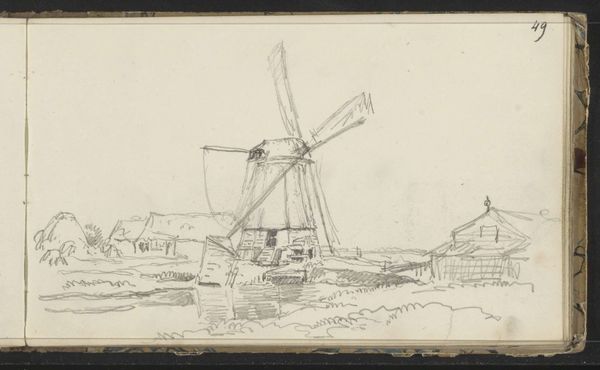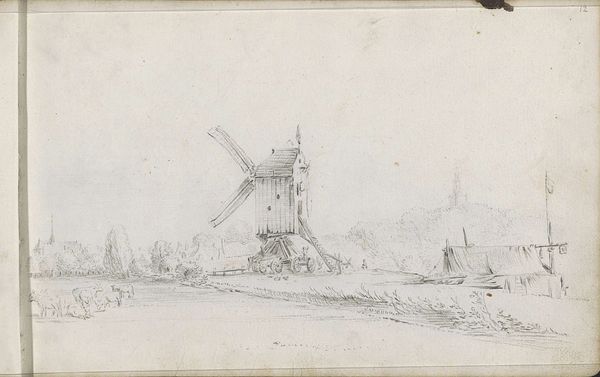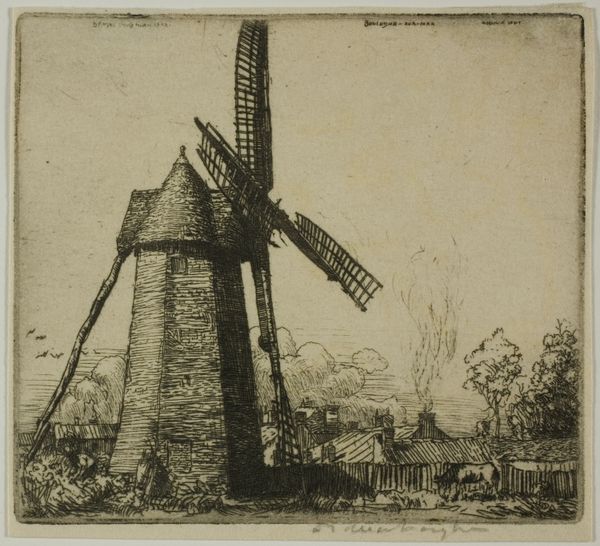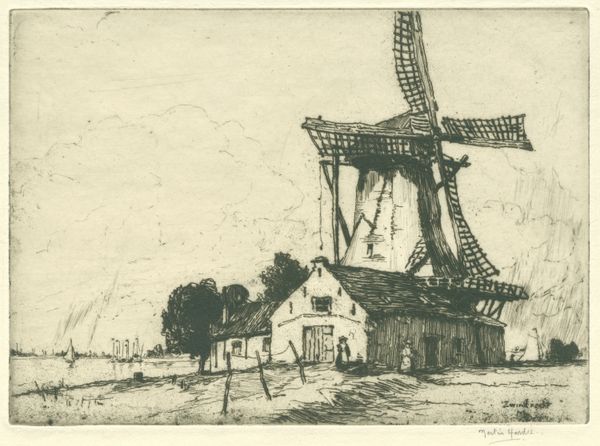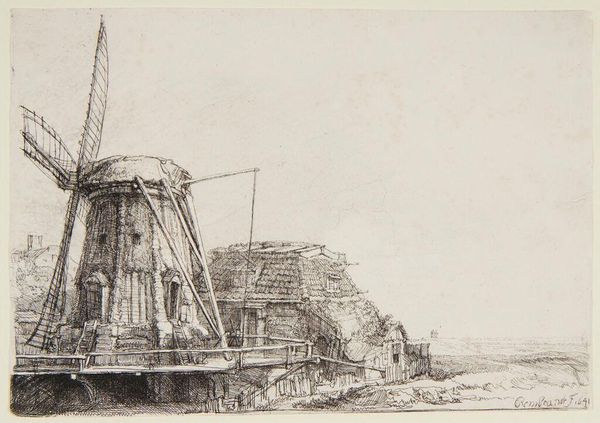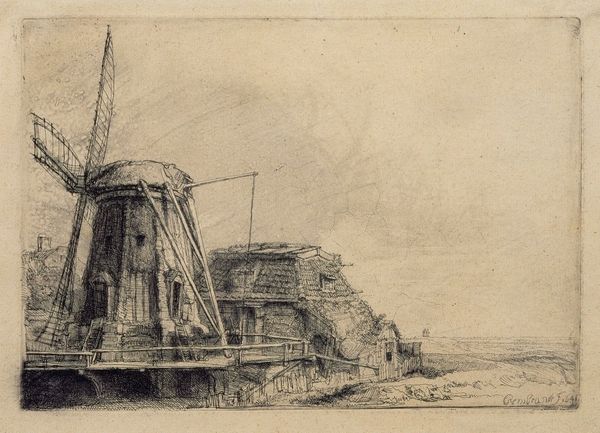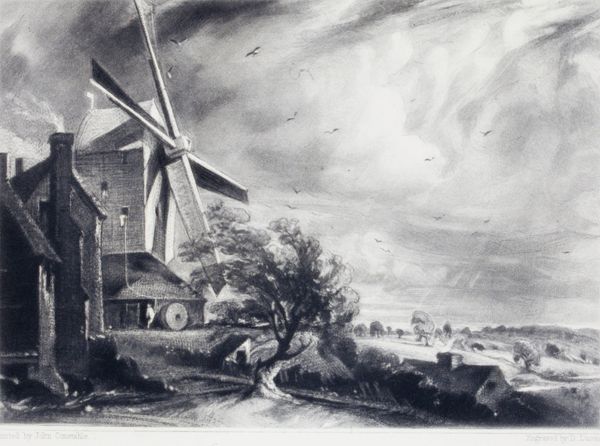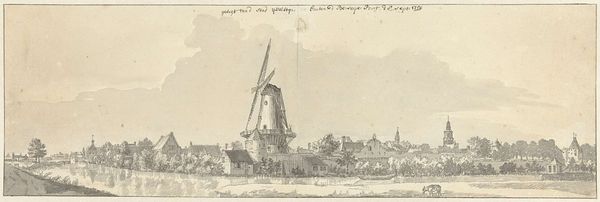
drawing, print, paper, ink, pencil
#
drawing
#
baroque
#
dutch-golden-age
#
ship
# print
#
pencil sketch
#
landscape
#
figuration
#
paper
#
ink
#
pencil
#
line
#
cityscape
#
realism
Copyright: Public domain
Rembrandt van Rijn made this drawing of the bastion in Amsterdam using pen and bistre. Here, we see Rembrandt sketching a scene that encapsulates the social and economic life of 17th-century Netherlands. The windmill, a symbol of Dutch innovation and industry, dominates the composition. It is a critical element in the process of land reclamation and grain production that shaped the Netherlands. Ships on the water allude to Amsterdam's maritime power and mercantile wealth, with the Dutch East India Company in control of shipping routes around the world. This sketch is an intimate glimpse into Rembrandt's world, but what is the role of the museum in preserving and presenting such images? It has the effect of shaping our understanding of history, culture and the meaning of progress. We rely on museums and academic publications to deepen our insight into art. Research into the economic history of the Netherlands can contextualize the society Rembrandt inhabited, emphasizing the relationship between art and the conditions of its production.
Comments
No comments
Be the first to comment and join the conversation on the ultimate creative platform.



